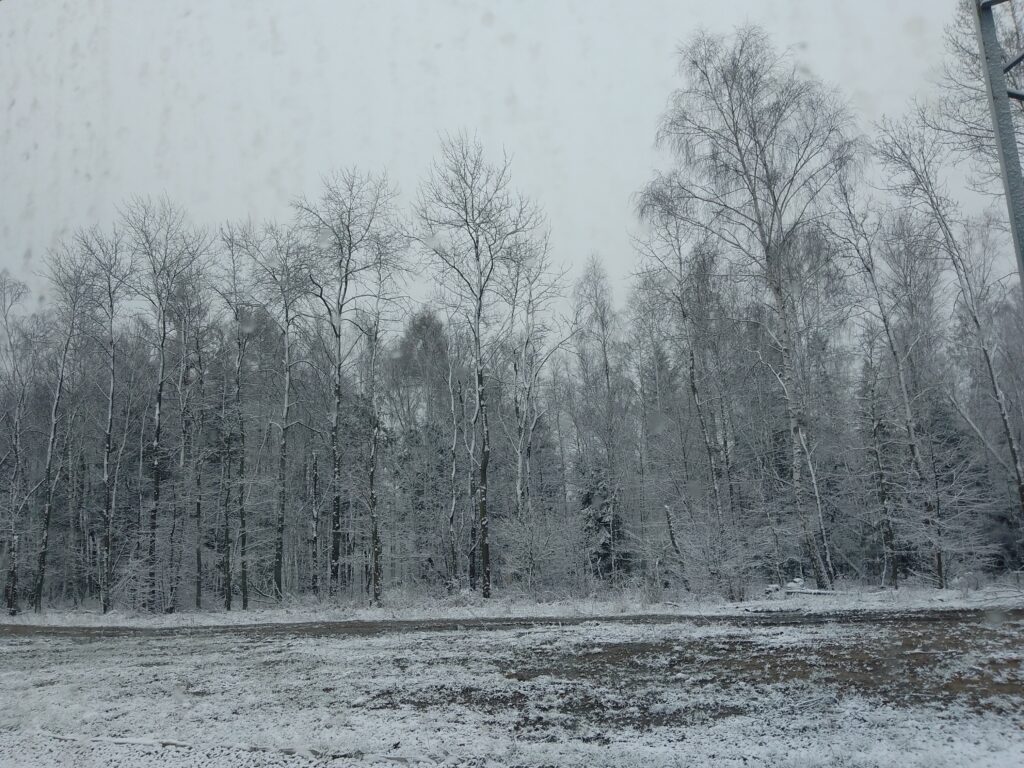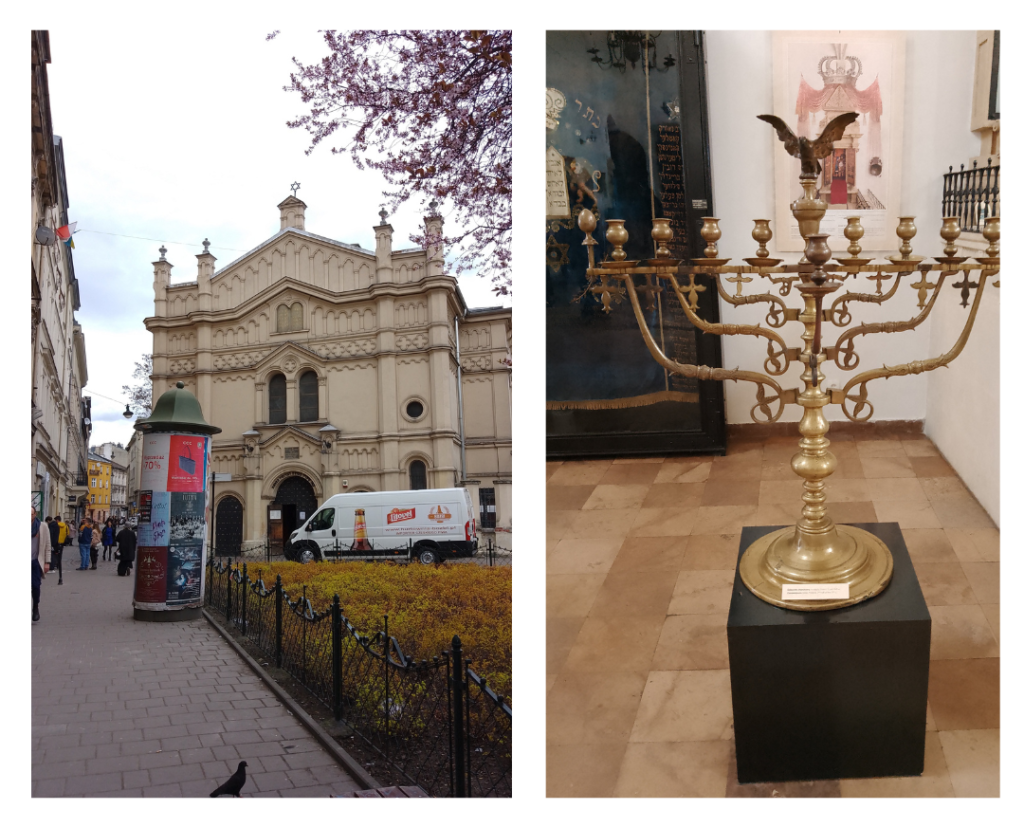
Walking with the dead in Krakow
Adam Brocklehurst finds the elegant city as disturbing as the nearby death camp and asks himself why.
I arrived at Krakow almost 80 years to the day from the liquidation of its Jewish ghetto. Centuries wiped out in weeks, for there had been a thriving Ashkenazi community in this Polish city from as early as the 13th century.
Indeed, Krakow had been a centre of great Jewish learning and cultural significance: the interpretation of rabbinic law by one of its residents, the level-headed Talmudic scholar Joel Sirkis in the 17th-century, seems centuries ahead of its time in its liberality.
By 1940 around 70,000 Jews called the city home (around 10% of all Poles were Jewish). The fate of this generation is explored in Thomas Keneally’s Schindler’s Ark, later filmed to great acclaim by Stephen Spielberg as Schindler’s List, an account of the real Oscar Schindler’s attempts to save the lives of Jews by manipulating Nazi Germany’s own system. He succeeded in saving some 1,200 Jews from certain death.
But Oscar couldn’t save everyone. Over 14,000 Jews from the Krakow ghetto were murdered in the Belzec death camp, and 200 orphans perished at Treblinka alongside the famed educator and philanthropist Janusz Korczack and the children’s minders, who chose to share their charges’ fate. Krakow was like a ship far out at sea with a slow leak, and no lifeboats. The vast majority of the city’s 70,000 strong Jewish population would not survive the death camps.
It hadn’t been easy locating the train to Oświęcim, from Kraków Główny train station. Oświęcim is better known in the English-speaking world by its German name Auschwitz.
When I politely enquired about the train’s departure platform, the woman at the ticket booth gave me the kind of look reserved for the dog when it leaves something unspeakable on the living room carpet and pointed furiously towards the departure screens. Having already examined these earlier with no luck, I wandered around until I found the train myself. It was nearly empty, and the few people aboard left it the nearer I came to my destination.
Unsurprisingly I wasn’t looking forward to this pilgrimage to Auschwitz. I had wrestled with my decision to go right up the day of my departure.
My mind was made up by a Jewish-Catholic friend, whose grandparents had survived Auschwitz and who had close family murdered there. She had asked if I would read the kaddish, the Jewish prayers for the dead, in their memory at the site of the gas chambers, and this obligation acted as my motivation.
The day had started out badly. What had been a beautiful warm March weekend turned glacial overnight and there was a heavy fall of snow. We passed through coniferous and birch woodland, some of the trees heavy with mistletoe, looking starkly black and white, very much like the setting for the tale of Baba Yaga in her chicken-legged house.

It recalled the journey of the Italian freedom fighter, chemist and memoirist Primo Levi as he watched this same winter landscape flying past on his own journey to Auschwitz, pondering his world shrunken to the size of a cattle wagon and his own impending death.
I arrived at the modern little station with its nice café after just about an hour and a half. No one can accuse the Polish of over-signposting. I found this resistance to being helpful curious, and wondered if it was the result of the long periods of occupation in the country’s history.
On my arrival at Auschwitz, I joined the long untidy queue, and was soon surrounded by cheerful Poles and tourists, and many groups of school children, some proudly wearing the Israeli flag around their shoulders.
The entrance was long and far too narrow for the crowds of people. The result was chaotic and the chaos disorientated me, making incipient anxiety rise in my chest, providing just an iota of an idea of what those arriving eighty years earlier may have felt.
We wound our way through the punishment barracks, the scene of the martyrdom of the Catholic saint Maximilian Kolbe, slowly starved, then poisoned in a pitch-dark standing cell. Our guide pointed out the building where the angel of death, Dr Josef Mengele, experimented on infants, twins and pregnant women, in ways that seem more the curiosity of a demonic monster than a man who had once sworn the Hippocratic Oath.
We were shown the material belongings left behind by those murdered at Auschwitz.

An elegant high-heeled shoe, displayed in a case with thousands of others, attests to the taste of one victim. She probably hadn’t heard in advance about the words over the Auschwitz entrance: “arbeit macht frei” (work sets you free). A single unworn child’s white leather buckled sandal was a shocking reminder to me that Nazi killing spared neither young or old.
Jewish life creeps up on you in Krakow. It’s there in the many donut shops and the fried potato pancakes sold in the Polish milk bars and restaurants, both perhaps culinary relics of the Jewish tradition of eating fried food at Hanukkah, as a means of recalling the Maccabees and the miraculous olive oil that provided light for eight days when there was only oil enough for one.
You can buy challah, the enriched pleated bread of Ashkenazi Jewish origin, served during the Friday Shabbat meal, in the bakeries. And that most iconic of Jewish foodstuffs, the beigel, is sold on every street corner.

I was staying in a small comfortable hostel, run out of an apartment, on Wojciecha Bogusławskiego in the Kazimierz district, in what’s now known as the Jewish quarter.
In 1940 the Jewish population of the area were expelled into the surrounding countryside or forced into the Krakow Ghetto. It’s now the city’s bohemian entertainment district, a place of reasonably priced restaurants, bars and nightclubs, where Krakow’s trendy young and tourists alike whoop and call and party the night away.

Amidst this jollity stands the deserted Temple Synagogue, tall and handsome in its mid-Victorian stucco, prepped and ready forever awaiting the congregation that will never return. There is a gaunt and forlorn Hebrew school adorned with Hebrew script and a star of David, devoid of the chatter of children.

Squares where secular Jews once socialised and Hassidic scholars argued a theological point now provide a hunting ground for pigeons. The shops which had housed the kosher butchers, the cafes which once resonated with the sound of Yiddish, pungent with the aroma of frying fish and rendering schmalz, have all been requisitioned for the needs of the goyim.
The Jews have all gone, yet their city remains, to be gawped at by tourists who stuff themselves with ersatz kosher food in ersatz Jewish restaurants. And in dark bars, huddled over their drinks, students discuss the merits of revolutionary change and no platforming for other places and other issues, when their current location could provide all the meat ever needed for debate.
The Jewish quarter in Krakow has the same quality that one finds in that terrible museum in Auschwitz, but for me it resonated much more. It was like wading through mud, so heavy is the presence of the past here. Unlike Auschwitz you are not glancing through the glass at an exhibit, you are standing on the very same cobbles as those whose lives were extinguished in the gas chambers.
Once, every doorpost here had its attendant mezuzah, the small roll of paper written with a passage from the Torah. This was where generations of Jews, lived, loved, gave birth, worshipped and worked, besides all the other small incidents that constitute a community.
The place is now thick with silenced voices, heavy with the dead. They move silently besides the living, like accusatory ghosts in a Yiddish play, pointing tremulous fingers at the audience. Like a mise-en-scène from one of the more conceptual, dialectic, Bertolt Brecht plays. Krakow feels like an ongoing injustice, a wrong yet to be set right.

The past has not been laid to rest here, and it leaves me shaken.
In a city that has existed for millennia, it takes time for wounds to heal, but they are slowly healing. I am told that the Krakow Jewish community is growing once more, that those who, as a matter of survival, hid their Jewishness so well it was forgotten, are rediscovering their roots, and that those with ancient ties to the city are returning to live there. I hope to live long enough to return one day and witness the visible presence of Jews in the beautiful, venerable old city they helped create.
As I write this article the veteran British left wing politician Diane Abbot is back in the news. I have admired the Labour firebrand and been infuriated by her in equal measure. The first black woman to become a Member of Parliament, she lit the way for black women like my mother, who understood the reality of lived racism, to escape the limitations imposed on them by a prejudiced society.
Regardless of being a constant victim of sustained racist invective over the entirety of her lengthy career, Abbot never stopped fighting for equality. She is almost the textbook definition of a conviction politician.
Yet she threw herself under the bus recently when she tried to argue for a hierarchy of racism, with her own experience at the top, and which placed anti-semitism somewhere around the level of the absolutely real, but rarely murderous, bullying that some red headed, and ginger haired people receive.
Having been immersed for a week in a country marked by the most terrible racism, I was confounded by the lack of wisdom in her comments. Racial prejudice is often a bespoke product, something that defies such easy categorisation as the binary of black and white, and Abbot’s fall from grace is a reminder that any bias within ourselves is something that needs to be checked.
Like what you’ve read? Consider supporting the work of Adamah by making a donation and help us keep exploring life’s big (and not so big) issues!
Adam Brocklehurst
Adam Brocklehurst is a writer for Adamah Media. He graduated from Luther King House in association with the University of Manchester with a Masters in Contextual Theology, after undertaking his Bachelor’s degree in History Theology and Ethics at Bishop Grosseteste University Lincoln, and did much better than he or anyone else expected.


2 Comments
Caroline
Great story! I like how you described Krakow as a city where ghosts of the past are creeping in the streets.
I have never been there, but makes me want to go now!
Anna
As a passing visitor, You’ve missed an opportunity to celebrate both the living and the dead. No, the Krakow from before 1939 will never return but the utter joy of seeing the Jewish community slowly but surely rebuilding what have been lost, the excitement on the faces of volunteers during Summer Festival, the sad but uniting song at the cemetery is palpable. Remember the history but move forwards, teach your children, celebrate life. Should we mourn forever?